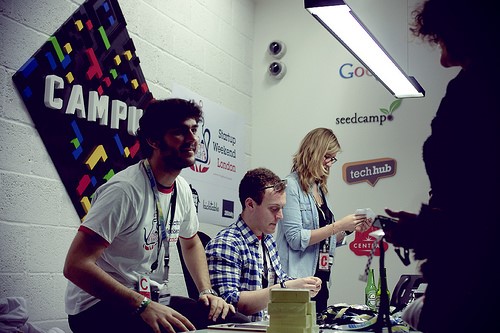Technology has changed the building industry in many ways. In the manufacturing sector, 3D printing has made it easier to mass produce key components such as molds, beams and more. For designers, virtual reality software has made it possible to imagine a project in a true 3D state. Beyond these innovations, you’ve got drones that can map construction sites, smart apps helping project managers and even Building Information Modelling (BIM) to help maintain buildings when they’re finished. Put simply, technology is responsible for massive changes in the construction industry over the last two decades.
Building Bridges in the Tech World
However, there are also times when buildings can facilitate technological change. Although bricks and cement don’t directly contribute to the advancements, the creation of technology hubs does. Since the dot.com boom of the mid-nineties, companies have been hot on the idea of housing tech start-ups in clusters. Today, anyone with an idea in the tech space can camp inside an incubator and develop their ideas. As well as offering secure, well-stocked environments that provide everything a start-up needs in terms of facilities, incubators are designed to be a breeding ground for ideas.
In the UK, Google Campus and Level39 are places where entrepreneurs can network and learn. In essence, these buildings allow tech-minded individuals to meet, interact and develop products in mutually beneficial surroundings. This trend is one that big businesses have started to embrace in recent years. In Europe, Mr Green recently moved its head office to Stockholm’s Epicenter. A purpose-built facility housing everything from blockchain start-ups to artificial intelligence (AI) projects, Epicenter has become one of Sweden’s leading tech innovation hubs.
Constructing the Future of Technology

For Mr Green, the move was as much of a practical decision as a business move. By relocating, the gaming company has been able to increase its head office team to 100 employees. Beyond that, it now shares space with companies on the cutting-edge of modern technology. This proximity to innovators in other sectors should, in turn, facilitate new ideas and products in the gaming space. Indeed, as per the Mr Green LinkedIn page, the company switched its name to MRG in May 2018 to reflect its changing status as something more than a casino brand.
In other words, a change of location has led to a philosophical change in the way the company operates. Therefore, in this sense, the building is contributed to the next generation of online gaming. By creating spaces where businesses can interact, everyone involved in building tech hubs is helping to reshape technology whether they realize it not. While the relationship between technology and construction may often seem like a one-way street. The opposite is true. Although it may not always be obvious, modern building designs are paving the way for the technology of the future.




